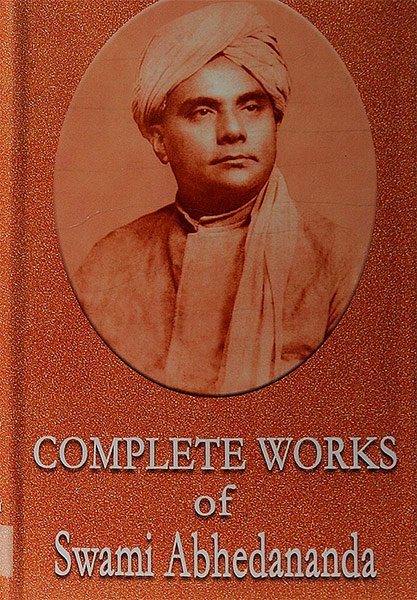Complete works of Swami Abhedananda
by Swami Prajnanananda | 1967 | 318,120 words
Swami Abhedananda was one of the direct disciples of Sri Ramakrishna Paramhamsa and a spiritual brother of Swami Vivekananda. He deals with the subject of spiritual unfoldment purely from the yogic standpoint. These discourses represent a study of the Social, Religious, Cultural, Educational and Political aspects of India. Swami Abhedananda says t...
Appendix 2 - Heart and Mind
What is the underlying principle of the heart in contradistinction to the mind? The two terms, ‘heart’ and ‘mind’, are used in a very loose way in ordinary conversation. The heart refers to the ‘feeling’, and the mind includes a lot of other activities and other functions. According to the Vedanta philosophy, mind is not the same as the spirit, but it is the instrument of the spirit. In the Christian Science and in other New Thought, you will find the mind and the spirit, the soul and the life and eternal being all refer to the same thing. In psychology, you will find that the mind includes heart, feelings, emotion and everything. But when the word ‘heart’ is used, we call it chitta. ‘Blessed are the pure in heart, for they shall see God’, says Jesus the Christ. There, the heart does not mean physical heart, but it refers to the ‘feeling property’ of percepts [precepts?] and concepts; that is, after perceiving an object an impression (samskara) is left in the mind. And all these impressions that we have gained must be purified. These impressions are the causes of future desires. If we wipe away these impressions that are stamped upon the mind substance, then the mind substance becomes pure. Then it gets the power of reflecting.
That idea is not given in any other philosophy except the Raja Yoga. The mind is regarded as the mirror, and if the mirror is covered with mud and dirt or dust, its reflecting power would be subdued. So, the mind of a worldly man or woman, who has all kinds of desires for the physical body and material world, has received all these impressions of material nature and they have formed like dirt or dust upon the mirror of the heart. These impressions will not die out, unless they are forced out, but they will retain the germs of future desires. The future desires are the resultant of our impressions of previous experiences. As for instance, if you eat a new dish that is very delicious, after you have finished the particular act of eating, the impression of the taste will remain in the subconscious mind, and that impression will sooner or later create a desire for that kind of enjoyment of the same thing once more. And then, next time when you enjoy it, it will create another impression, and then the previous impression will be strengthened by the next impression. So, every time you enjoy anything or experience anything, your subconscious mind is stamped, and that gets into a habit. What we call ‘habit’ is but a series of impressions. And it becomes so strong that it moulds our whole character and that’ is our second nature. The first nature was also produced in the same way. A person becomes a drunkard or a drug addict in the same way. But these impressions (samskaras) are the obstacles that are holding us down on this plane, and we cannot get the knowledge of the supreme Truth. To get this supreme knowledge, we must purify our hearts. By the purification of the heart we mean that we should rub it off with discrimination. Instead of indulging in desires, some say, you should kill them out. But you cannot kill them out. There are certain cults that teach: ‘Kill out all the desires and make your mind blank’. We cannot do that. It will be absolutely impossible to do that. We can reduce the number of desires by dicrimination and not allowing indulgence. In that way we can purify our heart or mind. So, the heart means the same thing as the mind, or feeling, or percept, or concept, which we have within us.
FAQ (frequently asked questions):
Which keywords occur in this article of Volume 1?
The most relevant definitions are: samskara, Vedanta, soul, chitta, Raja Yoga, material world; since these occur the most in “heart and mind” of volume 1. There are a total of 8 unique keywords found in this section mentioned 9 times.
Can I buy a print edition of this article as contained in Volume 1?
Yes! The print edition of the Complete works of Swami Abhedananda contains the English discourse “Heart and Mind” of Volume 1 and can be bought on the main page. The author is Swami Prajnanananda and the latest edition is from 1994.
